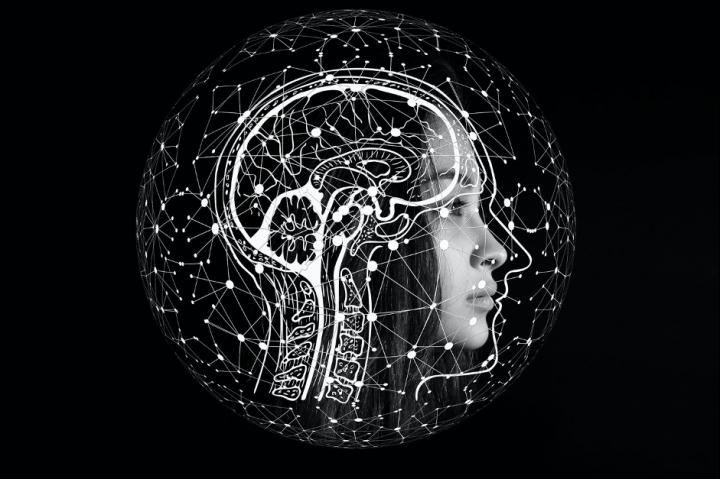
Credit: Source: Image by Gerd Altmann from Pixabay https://pixabay.com/illustrations/artificial-intelligence-brain-think-4389372/
With only 1% difference, the human and chimpanzee protein-coding genomes are remarkably similar. Understanding the biological features that make us human is part of a fascinating and intensely debated line of research. Researchers at the SIB Swiss Institute of Bioinformatics and the University of Lausanne have developed a new approach to pinpoint, for the first time, adaptive human-specific changes in the way genes are regulated in the brain. These results open new perspectives in the study of human evolution, developmental biology and neurosciences. The paper is published in Science Advances.
Gene expression, not gene sequence
To explain what sets human apart from their ape relatives, researchers have long hypothesized that it is not so much the DNA sequence, but rather the regulation of the genes (i.e. when, where and how strongly the gene is expressed), that plays the key role. However, precisely pinpointing the regulatory elements which act as ‘gene dimmers’ and are positively selected is a challenging task that has thus far defeated researchers (see box).
Marc Robinson-Rechavi, Group Leader at SIB and study co-author says: “To be able to answer such tantalizing questions, one has to be able identify the parts in the genome that have been under so called ‘positive’ selection [see box]. The answer is of great interest in addressing evolutionary questions, but also, ultimately, could help biomedical research as it offers a mechanistic view of how genes function.”
A high proportion of the regulatory elements in the human brain have been positively selected
Researchers at SIB and the University of Lausanne have developed a new method which has enabled them to identify a large set of gene regulatory regions in the brain, selected throughout human evolution. Jialin Liu, Postdoctoral researcher and lead author of the study explains: “We show for the first time that the human brain has experienced a particularly high level of positive selection, as compared to the stomach or heart for instance. This is exciting, because we now have a way to identify genomic regions that might have contributed to the evolution of our cognitive abilities!”
To reach their conclusions, the two researchers combined machine learning models with experimental data on how strongly proteins involved in gene regulation bind to their regulatory sequences in different tissues, and then performed evolutionary comparisons between human, chimpanzee and gorilla. “We now know which are the positively selected regions controlling gene expression in the human brain. And the more we learn about the genes they are controlling, the more complete our understanding of cognition and evolution, and the more scope there will be to act on that understanding,” concludes Marc Robinson-Rechavi.
Box – Positive selection: a hint of the functional relevance of a mutation
Most random genetic mutations neither benefit nor harm an organism: they accumulate at a steady rate that reflects the amount of time that has passed since two living species had a common ancestor. In contrast, an acceleration in that rate in a particular part of the genome can reflect a positive selection for a mutation that helps an organism to survive and reproduce, which makes the mutation more likely to be passed on to future generations. Gene regulatory elements are often only a few nucleotides long, which makes estimating their acceleration rate particularly difficult from a statistical point of view.
###
REFERENCE
Jialin Liu and Marc Robinson-Rechavi, Robust inference of positive selection on regulatory sequences in the human brain, Science Advances, 2020.
DOI: 0.1126/sciadv.abc9863
Media Contact
Maia Berman
[email protected]
Original Source
https:/
Related Journal Article
http://dx.




